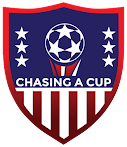

USMNT
Investment Value
Published
6 years agoon
Watching Mathew McConaughey talking with Christian Pulisic and discussing his involvement with Austin FC in the MLS made me wonder if that was for fun or has soccer become kind of a hipster investment project.
Kevin Durant was seen recently talking with Philidalphia Union.
I’ve seen tons of investment groups talking about the ceiling that the NFL is near and the impossibility to get involved there or the NBA. The decline of the MLB and NHL are noted. Also funny enough I noticed how ESPN’s top level navigation had changed (dropping MLB and NHL took a nose dive) and they finally incorporated soccer into the main site a few years ago..

Is it a real investment opportunity or just a fun project for the wealthy?
- LeBron James is part owner (2%) of UCL Champions Liverpool in England.
- Steve Nash is majority owner of Spanish club Real Mallorca and has been featured for FIFA and been a commentator for soccer in Europe.
- Tony Robins and Will Ferrell are part of a huge group that own LAFC including Magic Johnson, Nomar Garciaparra, Mia Hamm, Allen Shapiro, Chad Hurley and Vincent Tan.
- Drew Carey shunned his Cleveland roots and is part owner of Seattle Sounders.
- Diplo & Didier Drogba are owner of UCL Club Phoenix Rising
- Carmelo Anthony is owner of Puerto Rico FC of the NASL
The list goes on. Could there be a day where we see NFL players sporting USMNT jerseys? That day has come and gone – JJ Watt, a Chelsea fan already and who is dating Chicago Red Star’s and USWNT soccer player Kealia Ohai

So how does soccer compare to other the big sports in viewership, attendance and valuation? Here’s a few numbers to chew on in some of the biggest sports teams in the US.
Viewership 2019
| NFL | |
| Super Bowl | 98,100,000 |
| AFC Championship | 53,900,000 |
| NFC Championship | 44,000,000 |
| NFC Division | 38,190,000 |
| NFC Wild Card | 35,890,000 |
| NFL Draft | 11,100,000 |
| 49ers vs Seahawks | 23,300,000 |
| Season Avg | 16,500,000 |
| NCAAF | |
| Championship | 25,280,000 |
| OSU v Wash | 16,780,000 |
| NCAA Bball | |
| Championship | 19,630,000 |
| MSU v Duke (8) | 16,200,000 |
| TT v MSU (4) | 15,840,000 |
| Oregon vs Michigan | 1,830,000 |
| NBA | |
| Game 6 | 18,760,000 |
| Game 5 | 18,600,000 |
| Finals Avg | 15,100,000 |
| Lakers vs Bucks | 2,780,000 |
| Season Average | 1,500,000 |
| MLB | |
| Game 7 | 23,000,000 |
| World Series Avg | 14,000,000 |
| All Star Game | 8,140,000 |
| Red Sox v Yankees | 449,000 |
| July Average | 198,000 |
| NHL | |
| Game 7 | 8,720,000 |
| Finals Average | 5,460,000 |
| All Star Game | 1,087,000 |
| Winter Classic | 2,972,000 |
| Flyers v Penguins | 1,969,000 |
| Season Average | 302,000 |
| UFC | |
| 244 | 910,000 |
| MLS & Club Soccer | |
| UCL Final | 2,958,000 |
| Liga MX Morelia v America | 1,800,000 |
| Liga MX Necaxa v Monterrey | 1,300,000 |
| MLS Cup | 1,270,000 |
| Liga MX America v Tigres | 1,100,000 |
| EPL Liverpool v City | 1,135,000 |
| EPL Leicester v Arsenal | 779,000 |
| Liga MX Avg | 737,000 |
| MLS LAFC v Galaxy | 462,000 |
| MLS Season Avg | 268,000 |
| Soccer World | |
| World Cup ’19 Women Final | 16,870,000 |
| World Cup ’18 Men Final | 11,800,000 |
| US v England WC ’19 Women Semi | 8,790,000 |
| Gold Cup Final | 8,540,000 |
| Mexico v Canada GC Group | 2,670,000 |
| US vs Curacao GC Quarter | 1,547,000 |
| US vs Jamaica GC Semi | 1,139,000 |
| US vs Venezuela Friendly | 1,037,000 |
| US vs Canada Nations League | 352,000 |
| FIFA U17 Korea v Mexico | 758,000 |
Social Media Following
| Followers (mostly Twitter) | |
| Cristiano Ronaldo (instagram) | 158,910,000 |
| Neymar (instagram) | 112,710,000 |
| Lionel Messi (instagram) | 112,110,000 |
| Cristiano Ronaldo | 81,900,000 |
| David Beckham (instagram) | 54,890,000 |
| LeBron James (instagram) | 47,910,000 |
| Neymar | 45,000,000 |
| LeBron James | 44,300,000 |
| Real Madrid | 33,500,000 |
| Barcelona | 31,600,000 |
| NFL | 24,900,000 |
| NBA | 29,000,000 |
| MLB | 8,500,000 |
| UFC | 7,300,000 |
| NHL | 6,300,000 |
| Zlatan Ibrahimovic | 6,300,000 |
| USWNT | 2,500,000 |
| USMNT | 2,200,000 |
| NCAA March Madness | 1,400,000 |
| Atlanta FC | 997,300 |
| Christian Pulisic | 370,000 |
| NCAA F | 355,400 |
| EPL | 134,300 |
| USYNT | 115,000 |
| US Soccer | 71,000 |
Average Attendance
| NCAA F Michigan | 111,459 |
| NCAA F Penn St | 105,678 |
| NFL Cowboys | 90,920 |
| NFL NY Jets | 78,583 |
| La Liga Barcelona | 75,208 |
| EPL Man U | 74,879 |
| NFL Avg | 66,648 |
| La Liga Real Madrid | 60,967 |
| EPL Arsenal | 59,897 |
| MLS Atlanta | 52,510 |
| MLB Dodgers | 49,065 |
| USMNT vs Mexico* single game | 47,960 |
| MLS Sounders | 40,247 |
| MLB Cardinals | 42,967 |
| USMNT vs Venezuela* single game | 23,955 |
| NHL Chicago | 21,402 |
| MLS Avg | 21,310 |
| NHL Dallas | 21,220 |
| NBA 76ers | 20,441 |
| NBA Bulls | 20,084 |
| USMNT Avg | 19,530 |
| MLB Avg | 17,820 |
| NBA Avg | 17,757 |
| NHL Avg | 17,320 |
| USWNT ’18 Avg | 14,064 |
Team Values
| Team | Value |
| NFL Cowboys | $5B |
| MLB New York Yankees | $4.6B |
| La Liga Real Madrid | $4.24B |
| La Liga Barcelona | $4.02B |
| NBA Knicks | $4B |
| EPL Man U | $3.81B |
| NFL Patriots | $3.8B |
| NBA Lakers | $3.7B |
| NBA Warriors | $3.5B |
| NFL Giants | $3.3B |
| MLS Atlanta | $500,000,000 |
| MLS Galaxy | $480,000,000 |
There is a lot to unpack from all of this data, but some clear signs that soccer belongs in the conversation.
The NFL is clearly in a league of their own for viewership and command the current American TV screen time. They have had bumps, but are back on track once again in 2019. The opportunities beyond that are there.
NBA has had some great movement of late, but are on a downward trend since the villainous Golden State has derailed and Zion Williamson’s injury slowed their new super hero’s rise. LeBron is aging and a changing of the guard is needed.
The value of investing in soccer in general is real, though at the highest levels what those teams are worth will continue to be a battle ground. Nearly every season there are rumors of clubs like Newcastle and others who might be for sale.
On the lower leagues, how far can they go? MLS is a young league their growth is well documented, though it’ll be interesting to see now that they are at capacity for growth in teams and will likely take a hit over the next few years in quality as they spread the top players out.
The value of investing in the US national team remains a mystery to me. It depends on how they value their organization and it’ll be critical we get to the 2022 World Cup. US Soccer had a ton of challenges in 2019 in the public eye with telling articles from NY Times, glass door reviews, a mass exodus of employees at the youth coaching levels and Wallstreet Journal’s coverage of their financial and lawsuit challenges will put a dark cloud of the organization itself. They didn’t make the 2018 World Cup losing to a small island nation who was eliminated. In their new leadership group they already have a loss to Canada to their name and were embarrassed at home by their rival Mexico 3-0 in a friendly after losing a Gold Cup final to them.
On the flip side the rise of Christian Pulisic and a tremendous youth movement might be enough to move the program forward. His success in the Premier League is unprecedented and with Matthew McConaughey taking the time to visit at Chelsea and JJ Watt being a fan it can only help the US men’s national program. The continuing rise of young Americans in Europe at the top ranks can only help the game get more popular and be more valuable as the next generation loves playing this sport.
You may like
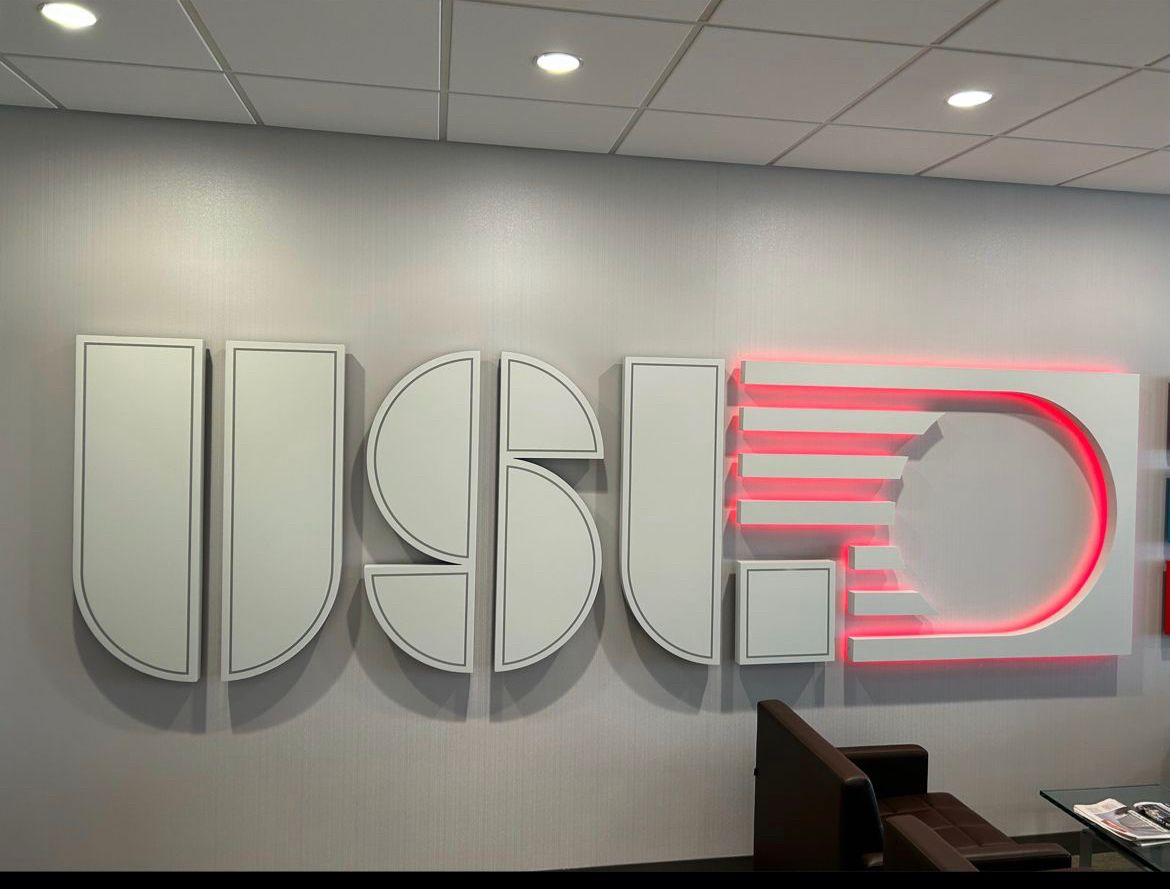
USL made national headlines when they announced on February 13th, 2025, their plans to launch a Division One league, followed by the announcement of promotion/relegation on March 19th for the new Division One league, the Championship, and League One. If sanctioned by US Soccer, USL Division One would be of equal status to MLS and compete for the best major soccer league in the U.S. The implementation of promotion/relegation in the USL would become the first in the U.S. and test the question asked for many years, “would pro/rel work in the U.S.” USL HQ informed the public that they planned to have the inaugural season of Division One during the 2027-2028 season with promotion/relegation beginning in 2028.
Until November 3rd, with the announcement of Tony Scholes being hired as the President of the Division One, only three teams have applied for membership to the inaugural season of Division one: Louisville City, North Carolina FC (who announced at the time of the Scholes news that they would fold until the launch of Division One), and Pittsburgh Riverhounds. There has been a rapid expansion of teams in the already existing leagues since the two announcements. Teams joining League One are: Fort Lauderdale FC (2026 debut), New York Cosmos (2026 debut), Port St. Lucie SC (2027 debut), Sporting Cascades FC (2026 debut), and Rodeo FC (2027 debut). Fort Wayne FC and Sarasota Paradise would also be joining League One from League Two (2026 for both teams). For the Championship, Reno, NV will once again have a team planned for a 2027 debut. Along with those teams, USL is actively working to expand to other markets. The markets and partners they are looking at are Brevard County, FL (Space Coast Pro Soccer), Riverside, CA (Riverside Pro Soccer), Brownsville, TX (City of Brownsville), Winter Garden, FL (Central FL Pro Soccer), Santa Rosa, CA (City of Santa Rosa), and Pensacola, FL (City of Pensacola).
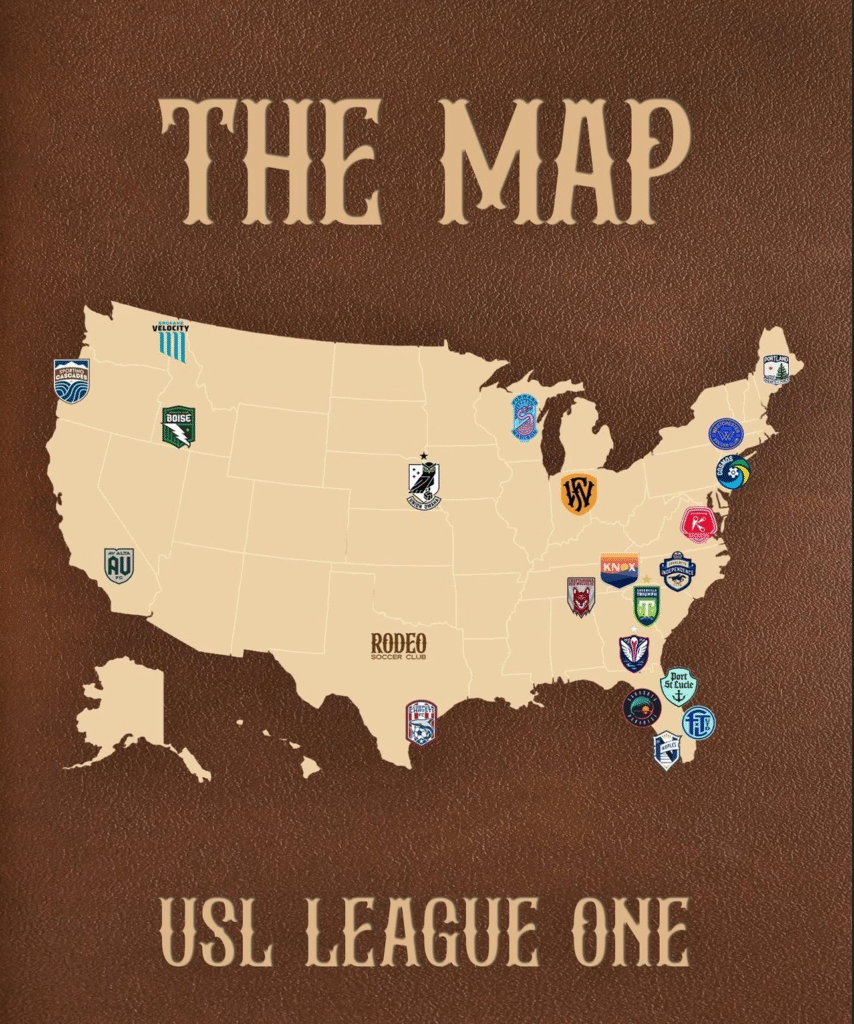
Along with these recently announced teams and partnerships, USL has teams joining the organization just in time for promotion/relegation that were announced prior to the February and March news. Starting with League One, these teams include: Corpus Christi FC (2026 debut) and Athletic Club Boise (2026 debut). As for the Championship, they will be adding Brooklyn FC (2026 debut), Sporting Jax (2026 debut), Atlético Dallas (2027 debut), Milwaukee Pro Soccer (TBD), USL Pro Iowa (TBD), Buffalo Pro Soccer (TBD), and Ozark United FC (2027 debut), while Santa Barbara Sky FC (2027 debut) would replace Memphis 901 FC.
Other than that, news on the Division One and promotion/relegation had been quiet until USL snatched Tony Scholes from the English Premier League. Tony Scholes will be the President of Division and help with the implementation of promotion/relegation. Scholes served as the chief football officer of the EPL and will join USL at the end of the EPL season. As of November 15, 2025, USL Division One has not been sanctioned as a division one league by US Soccer. The hiring of Scholes indicates that they are confident this new league will get approved or they have already been told it will, behind closed doors. The fact that we have not heard news on what the promotion/relegation format would be, and Scholes task would be to help implement it could mean that USL has not come to a decision on one. Since we do not have any ideas on what the format could be, I want to provide a possible option that they could go with.
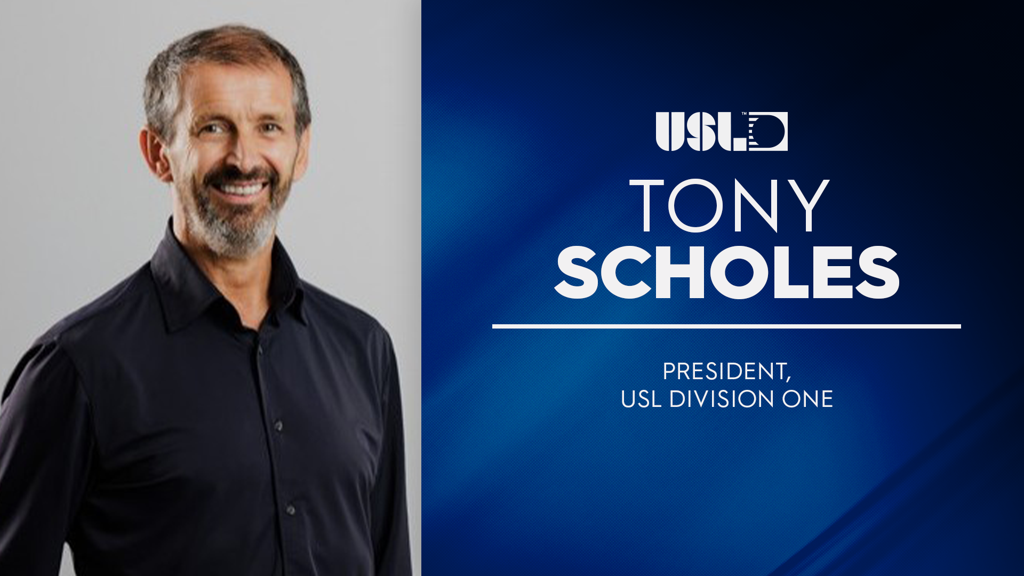
One of the biggest questions people have had since the USL announced promotion/relegation was how they would tie it to the playoffs. There is an option they could do, but it would result in only having one playoff. USL would have a playoff for Division One, but they would eliminate the concept for the Championship and League One. It might not be the most popular idea here in the U.S., but the main goal for the lower leagues is to get promoted, not to win a trophy. They would retain the league title for those two leagues with the winner being the team with the most points at the end of the season, just like how it is in the European leagues. The purpose is to create fairness for the top performing team(s) in the two lower leagues and reduce confusion. If there is a need for a playoff format, they could adopt the format the Bundesliga uses where the 16th best team in the first division and the 3rd best in the second division face-off in a two-leg match to see who would be in the first division the following season. The other option is the Championship concept, where the teams who finished 3rd through 6th in the table compete in a promotion playoff. The semi-finals are two-leg matches while the final is a single-leg match. The winner is promoted to the EPL. The execution of promotion/relegation must be done perfectly to retain fans, gain fans, prevent confusion, and be entertaining.
USL already has a division one league with their women’s Super League, who is competing against the NWSL. Currently, the S League has only nine teams (Brooklyn FC, Carolina Ascent FC, Dallas Trinity FC, DC Power FC, Ft. Lauderdale United FC, Lexington FC, Spokane Zephyr FC, Sporting Jax, and Tampa Bay Sun FC) to the NSWL’s 14 teams (3 teams in the works). The Super League will be adding an additional nine teams (Athletic Club Boise, New York Cosmos, Ozark United FC, Buffalo Pro Soccer, Chattanooga Red Wolves FC, Forward Madison FC, Indy Eleven, Oakland Soul SC, and USL Palm Beach) with all but three to have their inaugural season to be determined. What makes the S League unique from the rest of the soccer leagues in the U.S. is that they use a fall-summer schedule. Competing against a top five women’s league in the world is a tall ask, but it shows the ambitions of USL.
They are also willing to take risks by voting to pass promotion/relegation for the men’s league and have a fall-summer schedule for the S League. If the S League schedule format proves successful, it stands to reason that they would move the men’s leagues to the same schedule. It would also avoid the organization from having to fight MLS for viewership when the leagues are in play, especially when they launch a direct rival and are at their most ambitious point in their history. The same can be done for the S League if promotion/relegation is successful for the men. USL can start establishing lower women’s leagues and introduce promotion/relegation to the women’s game here in the U.S.
Many would say USL still stands no chance at competing against MLS, even with promotion/relegation and having a division one league. That is the case when you look at the quality of the players is finance, but that is the reason why the USL made these decisions based on the reports prior to the announcements and afterwards. Promotion/relegation and the introduction of a division one league could see an increase in investors. We are already seeing that with the likes of Gio Reyna joining Fort Lauderdale as an investor, BellTower Partners investing into USL, Sofia Huerta and Kasey Keller joining the Athletic Club Boise ownership group, and the Chickasaw Nation becoming an investor of the OKC for Soccer just this year alone. Then there is the expansion fee for MLS, MLS Next Pro, and the USL leagues. MLS charges an astounding $500 million! Yes, the money is used to construct a proper stadium, acquire players, etc., but at this point it will discourage many from purchasing a franchise license. MLS currently only has two leagues and one of them is advertised as a development league to prepare for MLS. The expansion fee for an independent team to join MLS Next Pro is unknown, but Sports Business Journal reported in 2024 that it is significantly cheaper than the USL Championship. The fee to join the USL Championship is $20 million while League One is only $5 million. These two fees are significantly lower than MLS and that will be more appealing to potential owners, but unlike the MLS fee, it is not enough for a stadium, training grounds, and players. As for what the fee is to join USL Division One, that is unknown at the moment.
I highly recommend reading the ESPN article by Jeff Carlisle titled “Will USL’s Move to Pro-Rel Change U.S. Soccer, Threaten MLS?” In there, Carlisle discusses the reasons behind the decision and that it is mostly financial. For example, a USL spokesperson said they expect to see an increase in commercial revenue by 15% to 30% due to promotion/relegation. Also, the former owner of San Diego Loyal lost $40 million in 4 seasons. As for the reaction from MLS, we have not heard one yet. The only possible reaction we have seen from them is what the former MLS Next Pro president, Charles Altchek, told to Backheeled back on March 6th, 2025. In the interview, he told them they aim to have 40 to 50 teams and a possible second league with one of the MLS Next Pro leagues being a second division, putting it in direct competition with USL Championship. The biggest question is, whichever league that is, can compete for fans? Due to the Apple TV deal, we currently do not have the ratings of MLS Next Pro. The closest idea we have is the attendance, which is 5,580 for USL Championship per match to MLS Next Pro’s 3,361, according to Transfermarkt. Unlike the attendance, the viewership for USLC is much higher where the season premiere match had 453,000 viewers. MLS Next Pro’s massive expansion plan announcement date was either a coincidence, or MLS got word USL’s promotion/relegation implementation with the division one news, and this was their response. I will let you come to your own decision.
It seems, as of right now, it appears MLS will sit back and wait to see how the USL’s Division One and promotion/relegation will play. Division One and promotion/relegation will either be successful for USL and lead them to the financial success they are hoping for or lead to the possible collapse of USL. American sports fans are not the only ones keeping their eyes on USL now, but the rest of the soccer world is after their two massive news. The coming years are going to be exciting times for American soccer!
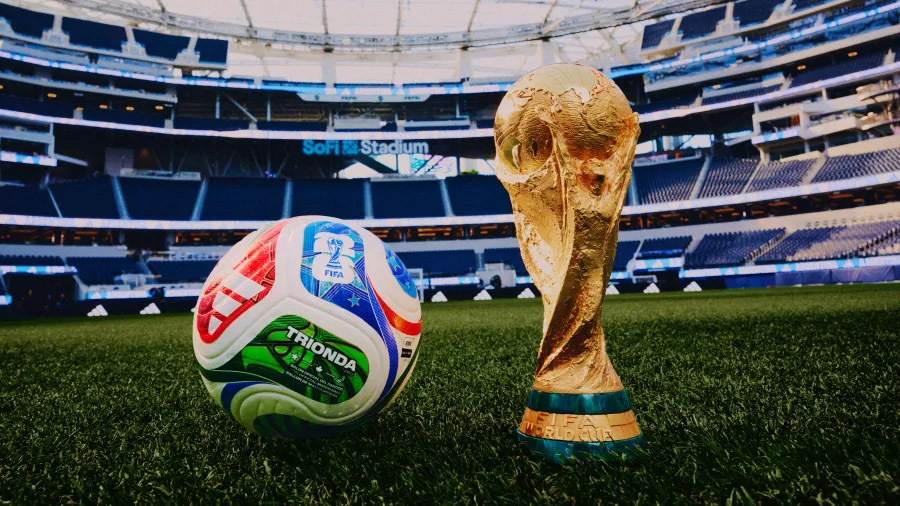
From Maradona to Messi: A Quick Look at World Cups 1986–2022
Thomas Deschaine (@uskeeper on X and us_keeper on Instagram)
A quick look back at the last ten World Cups reveals how the world’s greatest sporting event has evolved and grown through the decades. With over 200 days until the 2026 FIFA World Cup kicks off, here’s a high-level recap of the tournaments that shaped its legacy, and a glimpse of what’s next.
1986 – Mexico
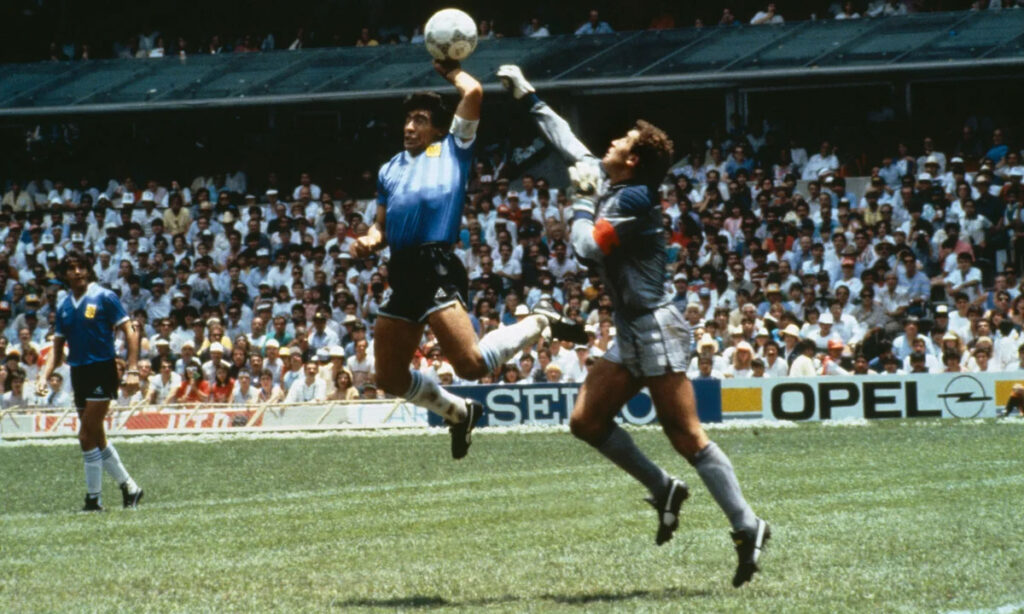
Diego Maradona delivered a World Cup for the ages, scoring both the “Goal of the Century” and the infamous “Hand of God” in the same match, then leading Argentina past West Germany to claim their second World Cup title.
1990 – Italy

The USA returned to the World Cup after a 50-year absence in what became the lowest-scoring tournament in history, as West Germany edged Argentina 1–0 on a late penalty. It marked West Germany’s final World Cup before reunification.
1994 – United States
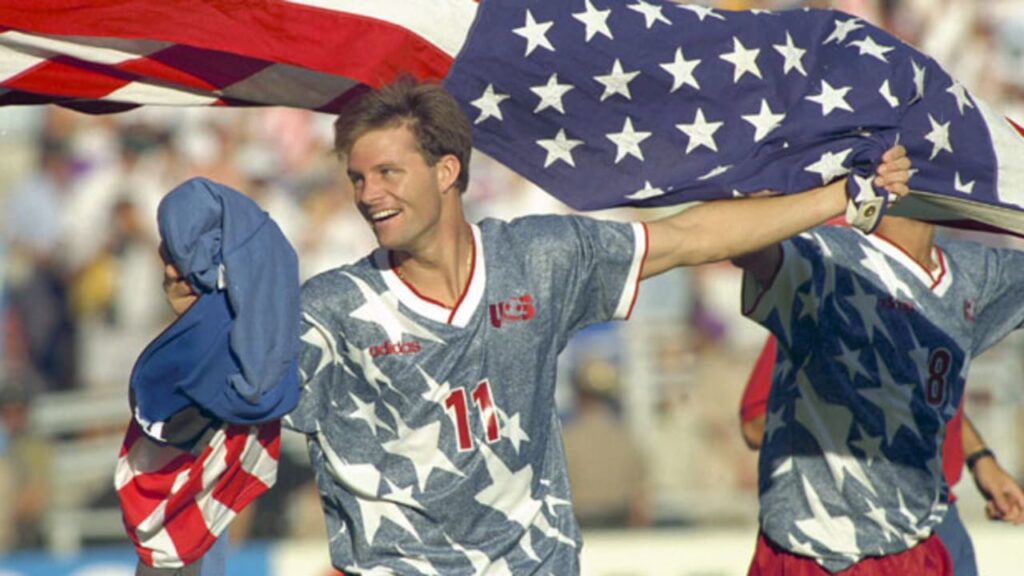
The USA hosted its first-ever World Cup, setting all-time attendance records as Brazil defeated Italy in the tournament’s first final decided by a penalty shootout in front of the largest crowds in US since the 1984 Olympics.
1998 – France
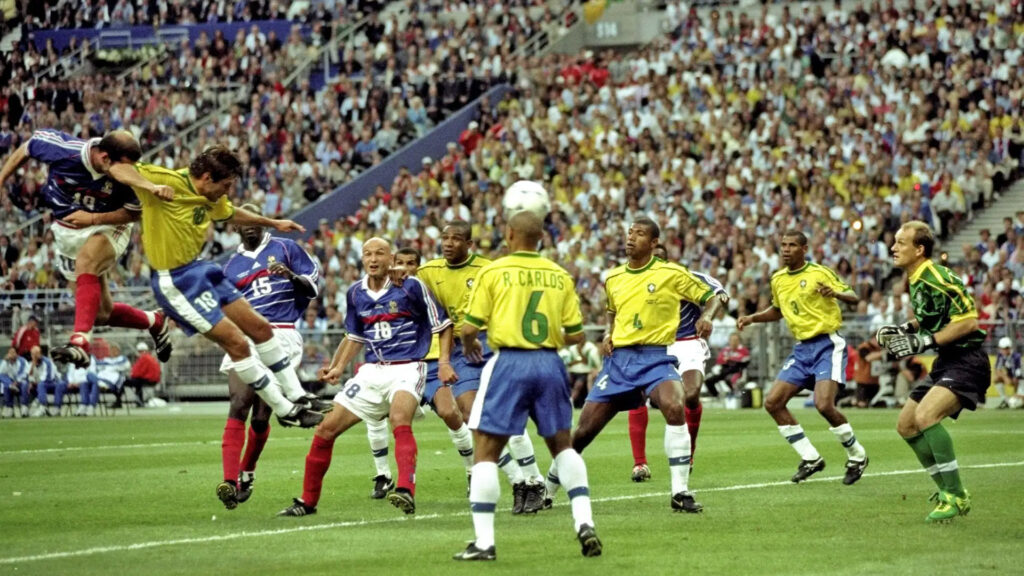
FIFA’s first 32-team World Cup saw host nation France capture its first-ever title, becoming the seventh country to win the trophy. Led by Zinedine Zidane triumphed on home soil with a commanding victory over defending champions Brazil.
2002 – South Korea/Japan
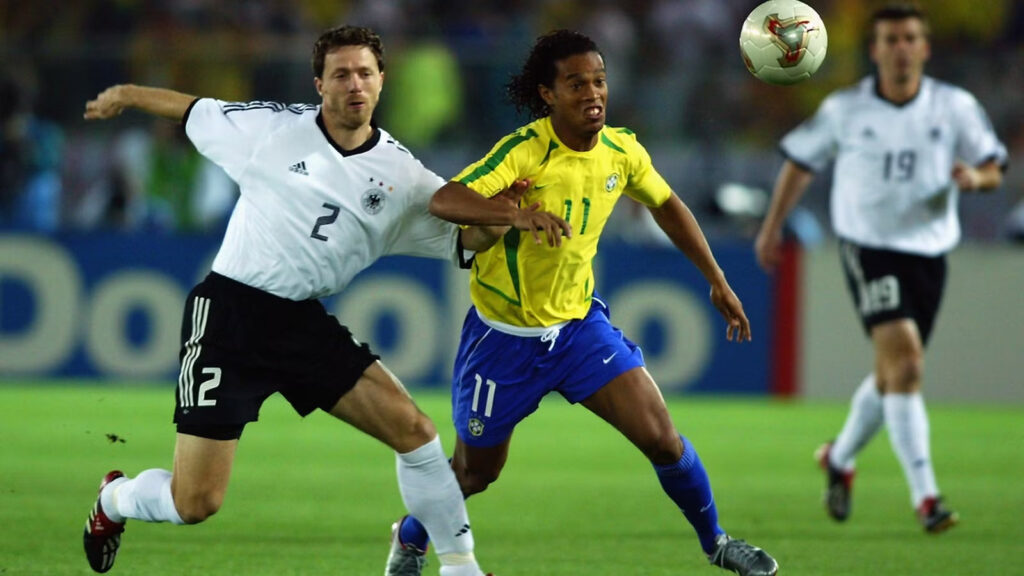
The first World Cup with co-hosting nations saw South Korea stun many by reaching the semifinals, while Brazil claimed their fifth title, powered by Ronaldo’s two goals in the final against Germany.
2006 – Germany

Germany came up short on home soil, losing in extra time to eventual first-time finalist Italy in the semifinal. Italy went on to claim its fourth World Cup, edging France on penalties in a final forever marked by Zidane’s infamous headbutt in extra time.
2010 – South Africa
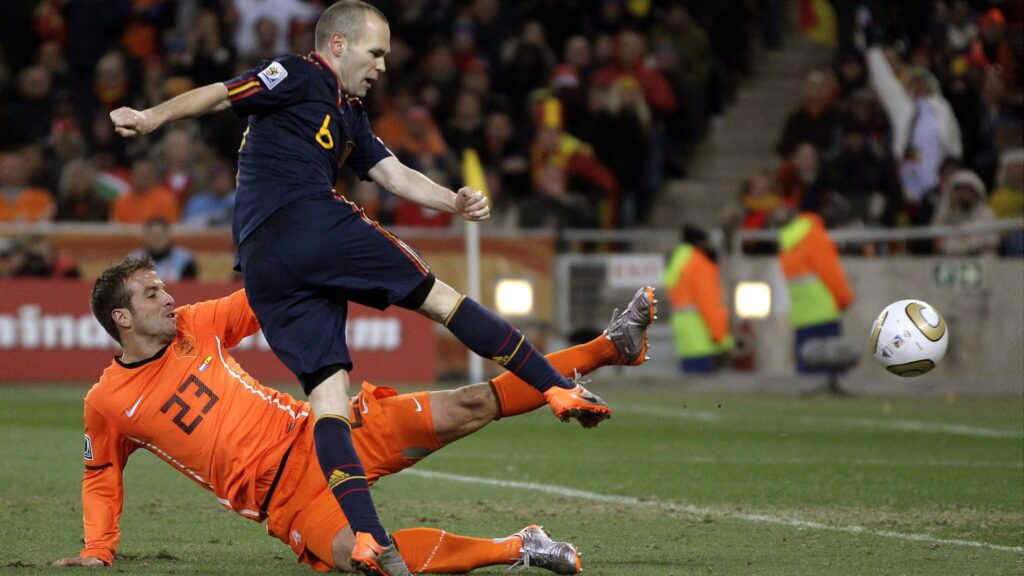
The first World Cup hosted by a CAF nation, South Africa, saw the host nation become the first ever to fail to advance past the group stage. Meanwhile, Spain captured their first World Cup, showcasing their tiki-taka mastery and defeating the Netherlands in extra-time with Andrés Iniesta’s decisive goal.
2014 – Brazil
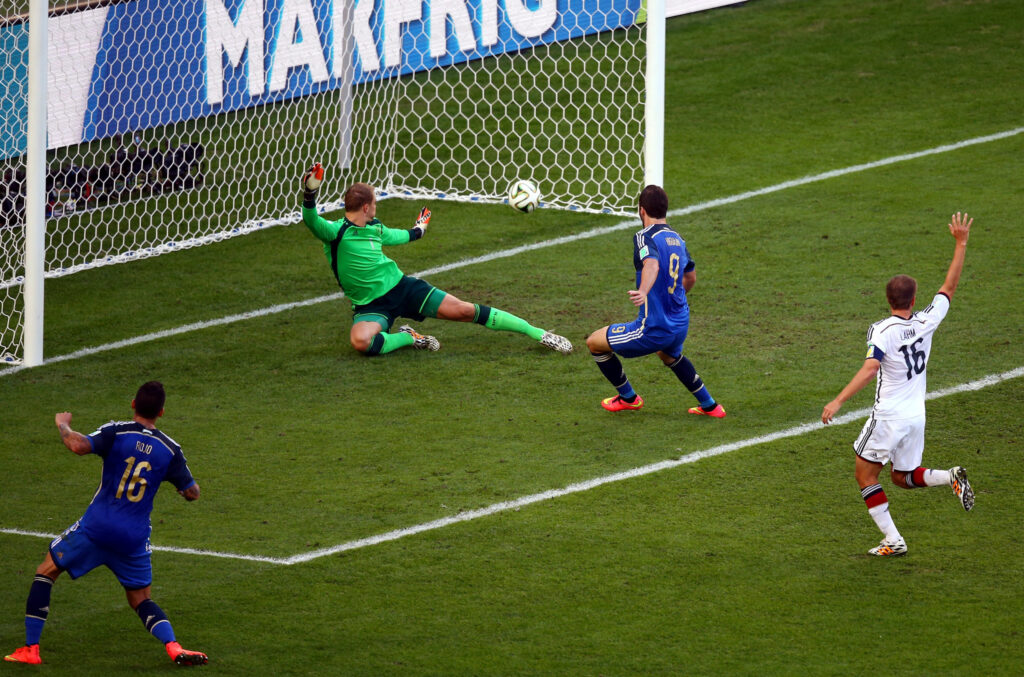
Host nation Brazil reached the semifinals on home soil but suffered a shocking 7–1 defeat to Germany and then fell 3-0 to the Netherlands in the third-place match. Germany went on to defeat Argentina in extra time, with Mario Götze scoring the decisive goal, while Lionel Messi claimed the Golden Ball as the tournament’s best player.
2018 – Russia
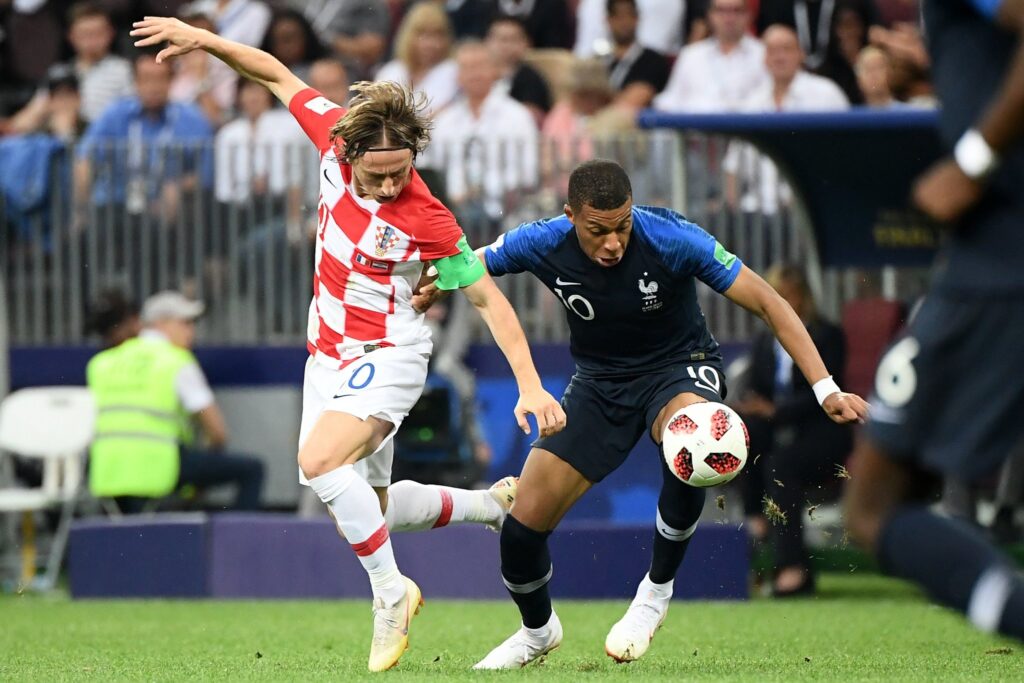
France’s golden generation, spearheaded by tournament Best Young Player Kylian Mbappé, captured their second World Cup title with a thrilling 4–2 victory over Croatia, led by Golden Ball winner Luka Modrić.
2022 – Qatar

The 2022 World Cup, overshadowed by controversies over migrant worker treatment and extreme heat, which pushed the tournament to November and December, ultimately delivered a historic finale. Lionel Messi achieved crowning glory as Argentina triumphed on penalties in a thrilling 3–3 final against France, highlighted by Kylian Mbappé’s hat-trick.
2026 – United States/Mexico/Canada
The 2026 World Cup will feature a major expansion from 32 to 48 teams and, for the first time ever, be hosted by three nations. Mexico will make history as the first country to host matches in three different World Cups, while the United States becomes the sixth nation to host at least twice. What unforgettable moments will define this landmark tournament?
USMNT
One Home or Many? The Debate Over a Primary Venue for U.S. Soccer
Published
1 month agoon
October 16, 2025
Thomas Deschaine (@uskeeper on X and us_keeper on Instagram)
The logics of the United States make it almost impossible for the USMNT or USWNT to have a primary venue to play all of their home matches but a trend of playing in a handful of stadiums has been developing over the last couple of cycles. US Soccer says there are specific factors behind where matches are played, some make sense, while others come across as lazy or lacking creativity.
If and when Major League Soccer aligns with the FIFA calendar and observes international breaks, more MLS stadiums could become available for matches. While not all MLS venues currently feature natural grass, US Soccer has indicated they would be willing to invest in installing grass, though at a cost of around $500K and with potential concerns about surface reliability.
Global Approach to Scheduling
Many of the top-tier international teams play their World Cup qualifiers and other critical matches in a primary venue or two. Here’s a sample of some of those countries and generally where they play based on my research.
Here are some of the more notable nations that play nearly all of their home matches at a single venue, a setup made practical by their smaller size and simpler logistics, which also makes it easier for fans.
Germany and Spain are known for rotating their non-critical home matches across multiple venues.

Argentina-Estadio Monumental (River Plate)
Belgium– King Baudouin Stadium (Brussels)
Colombia-Estadio Metropolitano Roberto Meléndez
England-Wembley Stadium
France– Stade de France (Saint-Denis, near Paris)
Italy-Stadio Olimpico
Northern Ireland-Windsor Park (Belfast)
Norway-Ullevaal Stadion (Oslo)
Portugal– Estádio da Luz (Lisbon)
Republic of Ireland-Aviva Stadium (Dublin)
Scotland-Hampden Park (Glasgow)
Uruguay-Estadio Centenario
Wales-Cardiff City Stadium
What’s in a location?
Here’s a look at the past few cycles, highlighting the USMNT’s home matches and the venues they’ve used. While US Soccer has clarified that they don’t control Gold Cup or Nations League venue selection, a point still under debate, they do manage the locations for Friendlies and World Cup qualifiers and continue to review and adjust those choices.
2026 Cycle (Matches Scheduled Through the end of 2025) – 46 Home Matches – 30 unique cities
So far, half of the USMNT’s home matches in the 2026 cycle have been held across eight venues. Only two more windows, March and May/June, remain for Friendlies before the 2026 World Cup.
- 4-AT&T Stadium, Arlington, Texas
- 4-Energizer Park, previously CityPark, St. Louis, Missouri
- 4-Q2 Stadium, Austin, Texas
- 3-Inter&Co Stadium (previously Orlando City Stadium and Exploria Stadium, Orlando, Florida
- 2-Allegiant Stadium, Paradise, Nevada
- 2-Geodis Park, Nashville, Tennessee
- 2-Rentschler Field, East Hartford, Connecticut
- 2-TQL Stadium, Cincinnati, Ohio
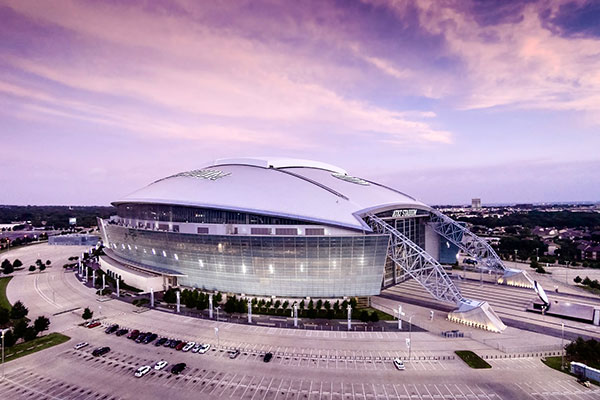
AT&T Stadium, Arlington, TX
2022 Cycle – 43 Home Matches – 24 unique cities
I can almost give US Soccer a pass on city and venue selection during the 2022 cycle, given the global circumstances at the time. That said, it’s interesting that they scheduled three consecutive home World Cup qualifiers in Ohio, with final round two matches in Columbus. Columbus has been a recurring choice, hosting multiple qualifiers in 2014, 2018, and 2022, handling one match each during both the semifinal and final rounds of qualifying in 2014 and 2018.

Lower.com, Columbus, Ohio
2018 Cycle – 47 Home Matches – 33 unique cities
During the 2018 cycle, the USMNT played in a wider variety of cities and venues. Aside from four matches in Carson, California for the January camp, they only repeated a location eleven times.

Dignity Health Sports Park, Carson, CA
2014 Cycle – 43 Home Matches – 29 unique cities
During the 2014 cycle, the USMNT repeated cities twelve times, but only two cities hosted more than two matches: Carson, California, where two of three games were for Camp Cupcake, and Kansas City, Kansas, which hosted three matches.

Children’s Mercy Park, Kansas City, Kansas
2010 Cycle – 35 Home Matches – 18 unique cities
One of the leanest home schedules in recent cycles saw the USMNT play in just 18 different cities, with 11 of them hosting only a single match. Over half of their home games were concentrated in four cities: Carson, California (7 matches); Chicago, Illinois (5 matches); and Foxborough, Massachusetts and Washington, D.C. (3 matches each).
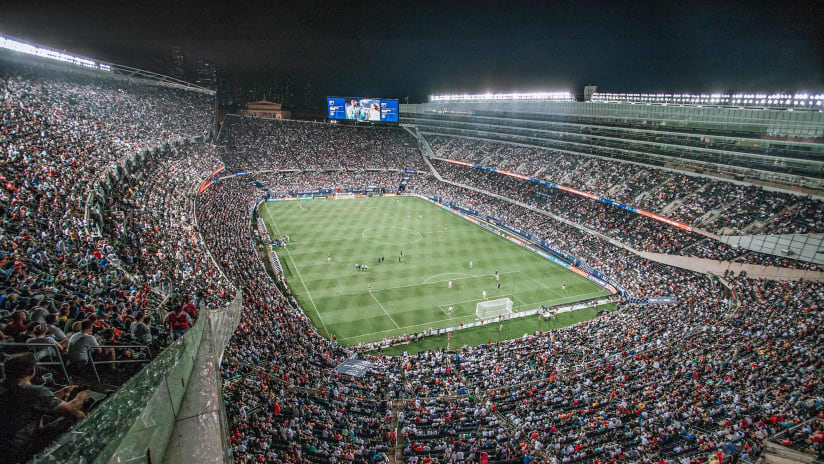
Soldier Field, Chicago, IL
2006 Cycle – 44 Home Matches – 24 unique cities
The USMNT played eight matches in Foxborough, Massachusetts—double the number held in the next two cities, Columbus, Ohio, and Miami, Florida, which each hosted four matches. Notably, the team has excelled in Foxborough, losing only once in 22 games played there.

Foxboro Stadium, Foxborough, MA
2002 Cycle – 38 Home Matches – 16 unique cities
During the 2002 cycle, California was clearly a preferred destination for the USMNT, hosting matches in five different cities across twelve games. Foxborough, Massachusetts, and Washington, D.C. each hosted five matches as well.

Rose Bowl Stadium, Pasadena, CA
1998 Cycle– 40 Home Matches – 21 unique cities
Washington D.C. was the city of choice for the USMNT during the 1998 cycle playing six matches. The USMNT would also play more than two matches in Los Angeles, California (5 matches), Foxborough, Massachusetts (4 matches) and Pasadena, California (3 matches) while playing only one match in twelve other cities.
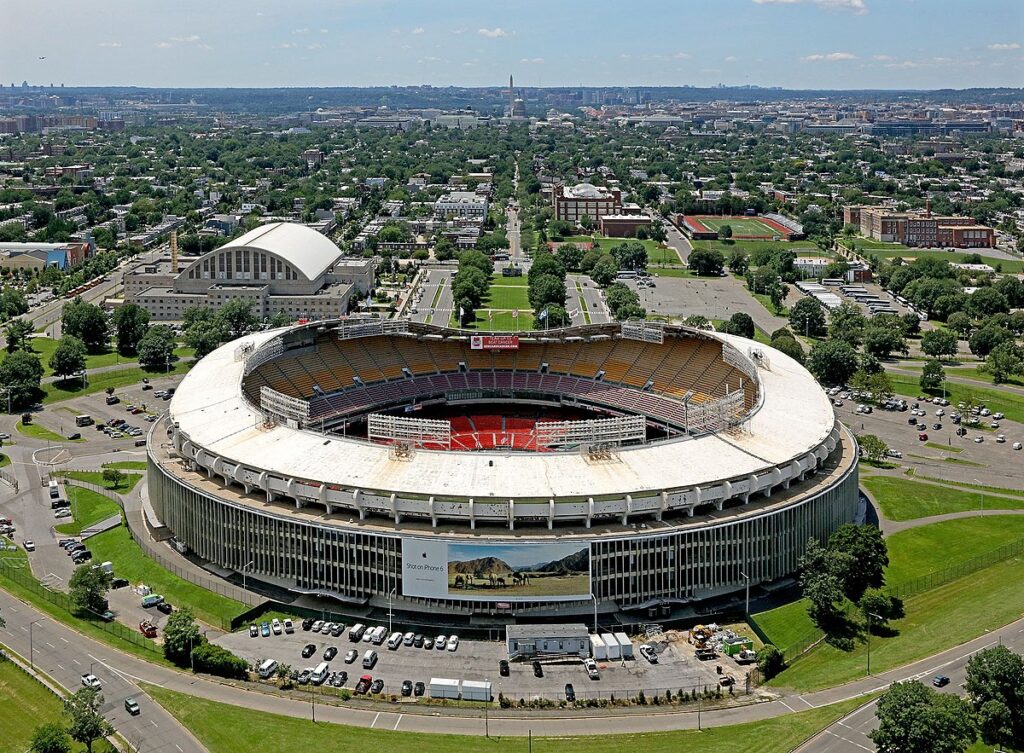
RFK Stadium, Washington, DC
Long Term Venue Strategy
While US Soccer may favor a single venue for most USMNT and USWNT matches, doing so would limit access for thousands of fans across the country. However, with the move to Georgia and the Arthur M. Blank U.S. Soccer National Training Center set to open in early 2026, ahead of the World Cup, it’s likely that future matches will focus on venues within three to four hours of Atlanta. We can expect the majority of games to continue taking place in roughly ten to twelve core cities.
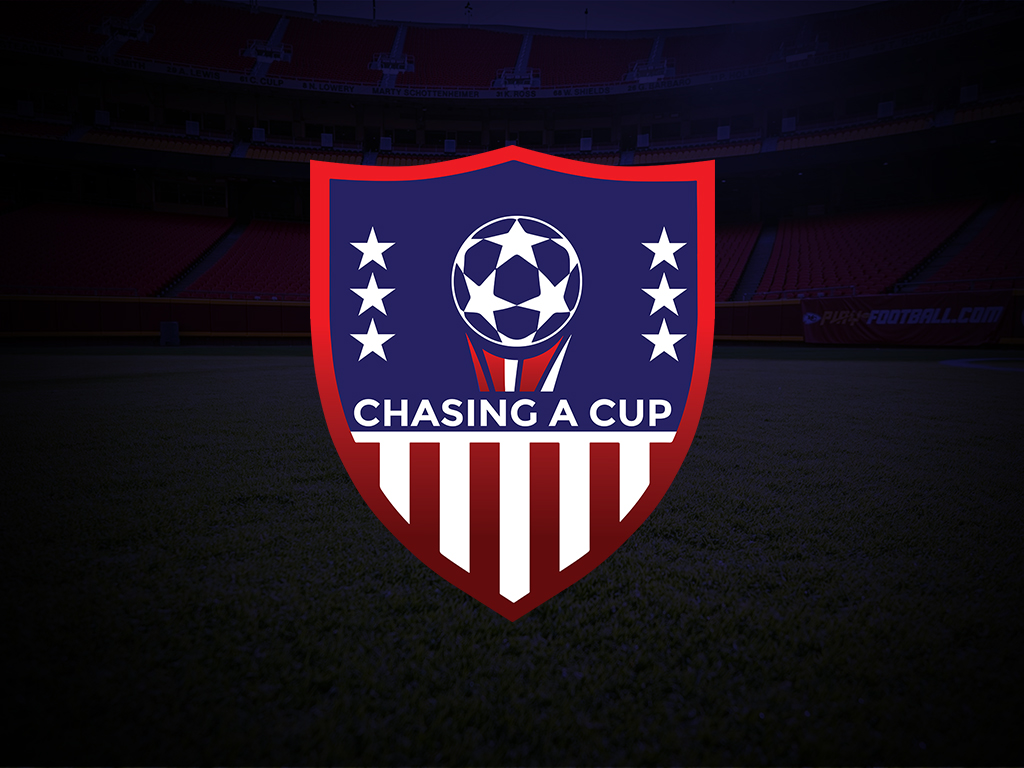

USL’s American Soccer Dream

From Maradona to Messi

One Home or Many? The Debate Over a Primary Venue for U.S. Soccer

Trending
-

 Club News1 year ago
Club News1 year agoAmerican Transfers: Stock Up & Stock Down
-
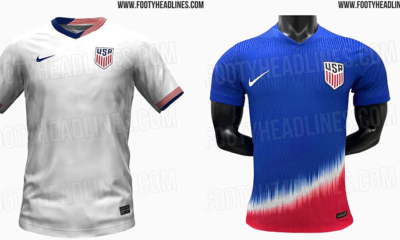
 USMNT2 years ago
USMNT2 years agoUSMNT Kits Come in Different Styles and Colors
-

 Club News6 years ago
Club News6 years agoJulian Vincente Araujo
-
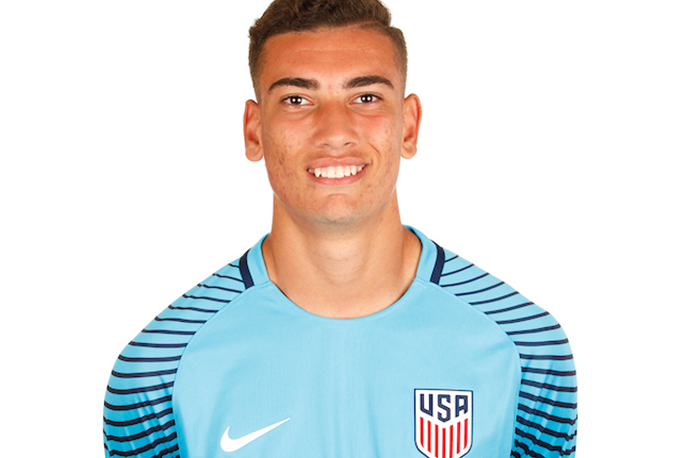
 Club News5 years ago
Club News5 years agoCJ dos Santos, Benfica
-

 USMNT5 years ago
USMNT5 years agoA Hidden Gem: Barça Residency Academy
-
USMNT3 years ago
World Cup Format History
-

 USMNT2 years ago
USMNT2 years agoIs the MLS Specifically Targeting Expansion to USL Cities?
-
USMNT6 years ago
MLS Quota

